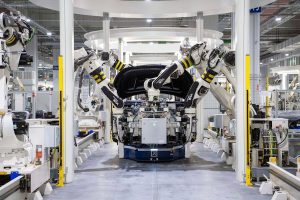Temperature Data Loggers vs. Thermometers

Various industries must accurately and reliably measure and keep track of the environmental conditions to which a product is exposed, such as temperature, air pressure and relative humidity. This is especially true in industries that deal with temperature-sensitive items like medical devices, food, drugs, and vaccines.
For instance, pharmaceutical companies must continuously monitor a vaccine’s temperature across all supply chain points. Quickly catching any unwanted temperature deviations can make the difference between delivering an effective vaccine and being embroiled in a multi-million-dollar product recall. With the WHO stating that over half of global vaccines go to waste due to logistics and temperature control issues, such monitoring is especially important.
These industries must have reliable devices for measuring and monitoring temperature at the manufacturing plant, in packaging unit, or cold storage facility. The type of temperature-taking instrument you use can make a huge difference in the accuracy and timeliness of the reading.
The choice often boils down to using either temperature data loggers or thermometers. When is it appropriate to use each one? Is there a difference between the two?
While both are some of the most widely used pieces of temperature monitoring equipment, a data logger can be markedly different from a traditional thermometer. A certain measure of overlap does exist between the two device categories hen it comes to some aspects of functionality and applicability.
In this explainer article, we’re sharing the key similarities and differences between temperature data loggers and thermometers.
What Is a Data Temperature Logger?
Also called thermal data loggers, temperature data loggers are an integral component of any robust environmental monitoring system. These electronic instruments are designed to collect, record, and document temperature data over time, primarily to help protect sensitive assets from temperature deviations and ensure regulatory compliance.
As you might expect, a variety of temperature data loggers are on the market today. However, three core features unify all of them:
- Sensors: A data logger relies mainly on a sensor (or a series of sensors wired to the same instrument) to measure temperature. They can be thermistors, thermocouples, or Resistant Temperature Detection (RTD) sensors. Each sensor is integrated into the target environment, be it an autoclave, freezer, warehouse, mantle, or heating chamber. Its job is to register ambient heat and convert it into an electrical impulse or signal.
- Microprocessors: The microprocessor receives electrical impulses from sensors and interprets them into computer-readable data. You can think of it as a small but powerful computer.
- Data storage units: Each temperature data logger can be wired to an internal storage device that is connected to an external sensor. These data storage units “log” or record the environmental data produced by the microprocessors.
Data loggers are used in just about any setting or application where temperature readings are supposed to be consistently taken and monitored. They are frequently used in healthcare, manufacturing, biologics, environmental research, food & beverage, agriculture, and aerospace industries — just to note a few.
Recently, temperature data loggers have been projected into the limelight for their all-important role in ensuring the integrity and safety of Covid-19 vaccines.
According to Dickson, an organization should consider upgrading to a temperature data logger if:
- It’s planning to upgrade to a cloud-based environmental monitoring system
- It’s process monitoring demands are growing rapidly
- It’s experienced an environmental excursion that could have been caught in time
- Current temperature-taking equipment is no longer effective or viable
- It can’t customize alerts and other temperature monitoring settings as desired
What is a Thermometer?
A thermometer is a temperature-taking instrument. It is often used in a medical, laboratory, or thermal setting. Numerous types of contact-based and contact-free thermometers are available.
For example, digital thermometers pack heat sensors to help measure temperature; digital displays show the reading. They are certainly a great improvement over their earlier cousins: liquid-in-glass thermometers.
The advancement of mobile sensor technology has also ushered in the era of app-based thermometers. Based on usage, your choice includes oral, ear, and forehead thermometers. The latter thermometers wirelessly connect to your iPad, tablet, or smartphone for easy and hassle-free viewing, recording, and monitoring.
Similarities between Temperature Data Loggers and Thermometers
It’s worth noting that digital thermometers are the closest relative of temperature data loggers. Both devices rely heavily on sensory heat inputs (most often thermocouple sensors) to gauge ambient thermal conditions and determine the temperature of the target environment.
As mentioned, these sensory probes are typically blended into equipment being monitored, such as autoclaves, the laboratory mantle, cold-storage freezer, or warehouse. Basically, they convert heat encountered by the high-conductivity register into electrical signals, which, in turn, are interpreted into digital temperature readings.
In most cases, these readings are displayed on a simple screen (such as on the digital thermometer display) or relayed into a storage/analytic system (such as is found in most cloud-based digital data loggers). Most digital thermometers and temperature data loggers sport several controls along with a colored display.
Both devices take temperature readings using thermal sensory inputs, so the main similarity is their method of acquiring temperature data.
How are Thermometers and Temperature Data Loggers Different?
Temperature data loggers can differ greatly from traditional thermometers in multiple ways, including applicability, device footprint, functional ability and capacity.
Temperature data loggers are usually used in highly demanding process monitoring applications – especially where constant temperature monitoring and higher throughput are essential. Most loggers monitor and collect complex temperature data across many different points, providing a verifiable record [of time vs. temperature reading] and eliminating the need for human oversight.
Most thermometers lack the automated environmental monitoring capabilities of temperature data loggers. They’re incapable of constantly recording temperature data across many points, such as the cold supply chain. Besides, they rarely keep a continuous record of temperature data.
Data loggers can receive input from many different sensory probes (such as humidity sensors, CO2 sensors, electrical/voltage sensors, air quality sensors, etc.) in addition to the temperature sensors. Typically, thermometers are only capable of inputting signals from temperature-specific sensors.
Thermometers can often operate with pretty much any universal thermocouple sensory input when it comes to thermal sensing. However, they’ve got a small footprint design meant for one-off or portable temperature readings, as is the case with medical thermometers.
On their end, data loggers have a larger footprint design that may include central data processing systems and a network of sensors integrated into different environments. For example, a data logger can be connected to the internet to send back data to a cloud-based service so that managers can retrieve, view, and analyze environmental data in real-time.
A real-time record of temperature variation can help identify and mitigate any deviations that could compromise product quality and safety.
Data loggers come with an array of advantages over traditional thermometers. These benefits include:
- Saves time: Data loggers allow for relatively hands-off temperature monitoring. Thermometers have numerous ongoing operational expenses that include regular manual checking.
- Data storage: Data loggers often automatically transfer temperature data to a computer or cloud-based storage for quick, real-time access and processing.
- Regulatory compliance: Loggers provide a credible, digestible set of temperature data that’s crucial to passing audits and ensuring compliance with relevant regulations.
- Beyond monitoring: With a digital temperature data logger, you can customize all aspects of the monitoring system to suit your organization’s needs.
- Protection of assets: Loggers can be programmed to alert staff to temperature deviations. In this way, you can take the necessary reactive action to protect your products and other assets.
Conclusion
The primary overlap between a digital temperature data logger and a thermometer is the way they record temperature data. Both devices use thermal sensors. However, they differ significantly in terms of capacity, applicability, device footprint, and function.






